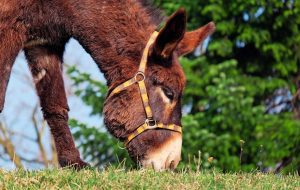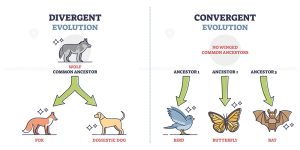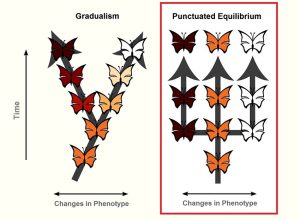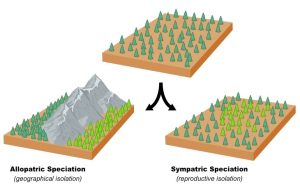Unit 7.10: Speciation in AP Biology
What is Speciation?
Speciation is the process through which new species evolve from existing ones. A common mechanism for speciation is reproductive isolation, where two populations of a species become physically or biologically separated. When these populations can no longer interbreed and exchange genetic information, they eventually evolve in different directions, resulting in the emergence of new species.
The biological species concept defines a species as a group of organisms capable of interbreeding and producing viable, fertile offspring. It emphasizes that reproductive isolation is the primary driver for the formation of new species.
To summarize: species are defined by their ability to reproduce sexually and produce fertile offspring. When a population is split and can no longer breed together, it leads to the development of new species.
Different Species? The Mule Example
Take the donkey and horse as an example: they can breed to create a mule, but that mule is sterile and cannot reproduce. This reproductive barrier and the different number of chromosomes in donkeys and horses are why they are classified as separate species. 
Rates of Evolution: Punctuated Equilibrium vs. Gradualism
The rate of evolution can differ greatly depending on ecological conditions. Two notable models describe the pace of evolution: punctuated equilibrium and gradualism.
Punctuated Equilibrium is the idea that evolution occurs in spurts—long periods of stability (stasis) are followed by short bursts of rapid change. This theory, proposed by Niles Eldredge and Stephen Jay Gould, suggests that most species remain relatively unchanged for most of their history.
Gradualism, on the other hand, posits that evolution is a continuous process that occurs gradually over millions of years, involving the slow accumulation of small genetic changes that lead to new species.

Divergent Evolution: Adaptive Radiation and Isolated Populations
Divergent evolution happens when populations of a species adapt to different environments, leading to the formation of new forms. When a population becomes geographically isolated, the isolated groups experience different selective pressures that result in divergent adaptations.
Adaptive radiation is another important concept related to speciation. It refers to the rapid diversification of a lineage into multiple new forms that adapt to various ecological niches. This occurs especially in situations where new habitats become available—for example, the formation of new islands from volcanic activity, which creates new opportunities for species to adapt.
Types of Speciation: Allopatric vs. Sympatric
Allopatric Speciation occurs when two populations become reproductively isolated due to physical barriers, such as geographical separation. The isolated populations evolve independently until they can no longer interbreed, eventually becoming two distinct species.
Sympatric Speciation happens within the same geographical area, often driven by disruptive selection or different mating preferences. In disruptive selection, two distinct traits are favored simultaneously, causing a population to split and evolve into two different species.

Prezygotic vs. Postzygotic Isolation
Isolation mechanisms can be categorized as either prezygotic or postzygotic:
Prezygotic isolation prevents fertilization between individuals—for instance, through different mating rituals or physical separation.
Postzygotic isolation occurs when mating happens, but the offspring are either non-viable or sterile. The mule is a perfect example of postzygotic isolation.
Practice Problem: Allopatric Speciation in Island Birds
Imagine a population of birds that becomes separated due to the formation of an oceanic trench. The island population evolves distinct traits for survival on the island, while the mainland population continues evolving under different selective pressures.
Identify the type of speciation that has occurred and explain the mechanism behind it. Then, determine whether it is a prezygotic or postzygotic barrier that prevents interbreeding between the two populations.
Answer:
The type of speciation described is allopatric speciation since the oceanic trench physically separated the two populations, preventing gene flow. The distinct adaptations of the island population would serve as prezygotic barriers, such as behavioral differences in mating rituals or physical differences preventing successful mating.
The formation of the oceanic trench and subsequent separation exposed each population to different selective pressures. Over time, genetic drift, mutations, and natural selection would cause each population to diverge, leading to speciation.













 4.1 Attribution Theory and Person Perception: Why We Judge People the Way We Do (Even When We’re Totally Wrong) Let’s be honest. We’ve all
4.1 Attribution Theory and Person Perception: Why We Judge People the Way We Do (Even When We’re Totally Wrong) Let’s be honest. We’ve all


